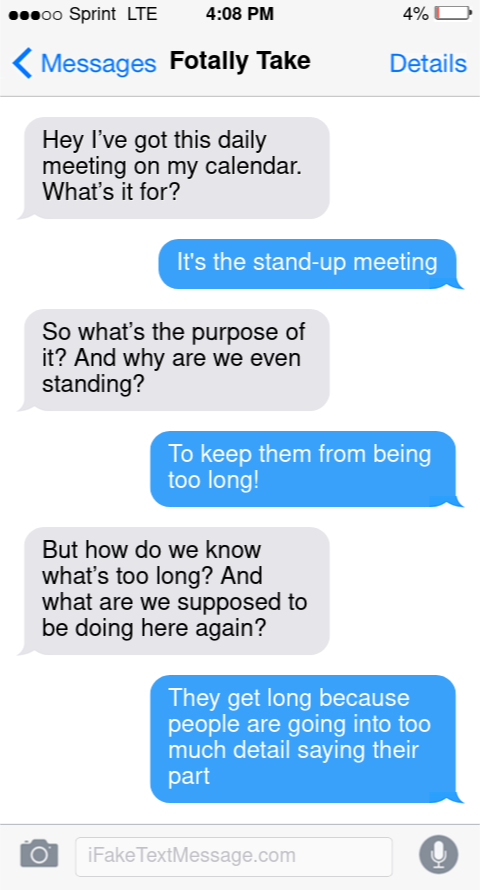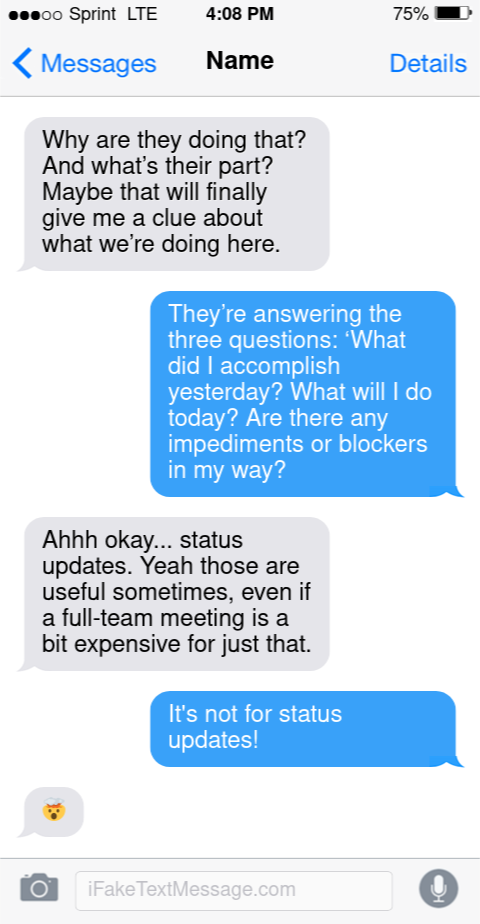Why Stand-ups are Terrible


Let’s face it: most time spent in most stand-up meetings is aimless pure waste. It’s usually because no one knows the goal of it, and most people are just going through the motions.
The Real Goal
In “standups” that I’ve run, the goal is for the team to coordinate on the work of the day in front of them. Yeah we need to know what happened yesterday to do that, but getting caught up on that quickly isn’t meant to be the majority of the time spent in the meeting. I can’t assume that this is the original point of stand-ups or that your company wants stand-ups for that reason, but it’s a pretty good reason to do them. Once (and only once) everyone is aware of the goal for it, you can start to figure out how to improve it, or satisfy the goal in a different way.
“Async standups” are the most common suggestion for an improvement, where we all write out status updates into email or slack. The person who thought up async standups was solving for the status updates part of the meeting. Certainly those updates are more efficient now, but in my experience it doesn’t lead to more coordination/collaboration, and they mostly even go unread. As far as iterating on your processes goes, you should probably never be saying “here’s something I get no value from. I’ll optimize it” when you can just stop doing it entirely. People shouldn’t have to do the equivalent of writing status updates into /dev/null. That’s a lose-lose for the people and the business.
Here are the actual problems to solve IMO
The status updates take too long. We don’t need to hear about your homeric odyssey into centering a div. Also, if your only update is “still in progress” for a card that is clearly in the “in progress” column, we’re cool to skip that too. Ideally the status update part of the meeting happens super-quickly (or even not at all if you can figure that out).
Relevance to all team members. Not every conversation on a team is relevant to all team members. To keep other people’s eyes from glazing over, longer coordination conversations that aren’t relevant to everyone should be held outside the meeting.
Lack of continuous-ness. Being up-to-date once per day is pretty terrible compared to being able to be up-to-date more continuously. Kanban boards are pretty damn good at this already, but I’m working on one that’s even better. I’ll write more on that in the next post!
